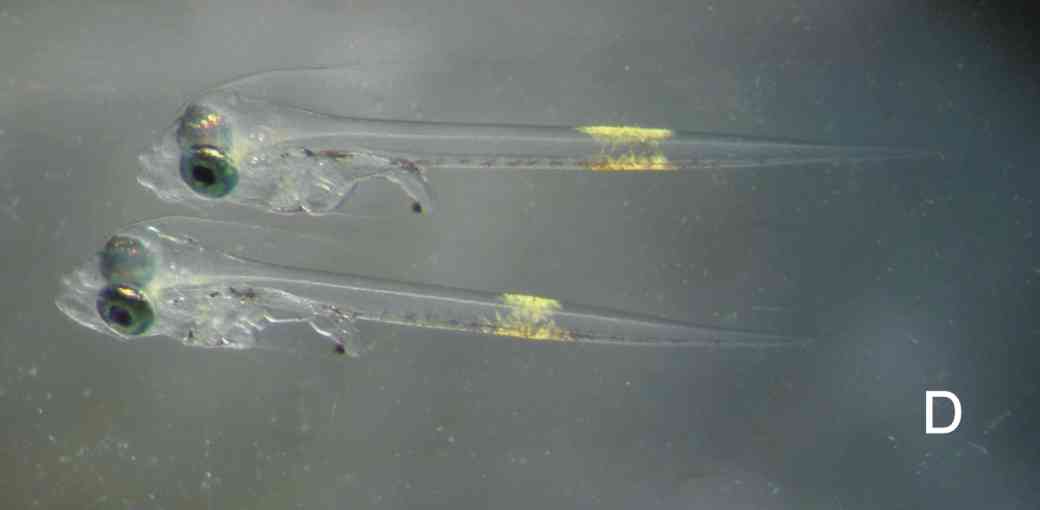Sparidae: L III C1B
Pachymetopon aeneum (Gilchrist & Thompson, 1908)
Blue hottentot





|
Egg diameter in µm |
Number of oil globules |
Diameter of oil globule in µm |
Yolk texture |
Perivitelline space |
Position of oil globule at hatch |
Gut length at eye- pigment stage |
Myomeres |
|
890-910 |
1 |
190 |
clear |
narrow |
stern |
41% of NL |
24 |
Egg: Three eggs, noted as different but similar to blacktail (LIIIC1), that were hatched for description and DNA barcoding, have returned a sequence that matches the sequence of P. aeneum. The egg has a more smudged and elongate yellow pattern in the tail (A). Incubation is 35-40 hours.
Larva: Plates A & B are of the same egg, while C is the 4-day larva, which looks the same as a blacktail larva at the same stage, right down to the black spot on the front edge of the anus (C and LIIIC1; D). B: NH, C: 4 days, D: 5days (24°C). Note: the larvae in D were DNA barcoded, and the sequences matched this species.
Since the start of barcoding in 2004, I have tried to separate aeneum eggs from other sparids; not too successfully. Of the 37 barcodes of LIIIC1B collected so far (BOLD), only 8 were P. aeneum, while 16 were Diplodus capensis, 6 were Chrysoblephus puniceus, , 3 were Polyamblyodon germanum and 1 each of Cymatoceps nasutus, Rhabdosargus sarba, Sparodon durbanensis and Diplodus hottentotus. It is likely that these eggs have, many times, been lumped with other sparids in the area, and barcoding has identified a large number within the larval code LIIIC1 ( Diplodus capensis), from which they are difficult to separate. P. aeneum is frequently seen on reefs in the 30-50m depth range, off Park Rynie.